Debanshu Ratha
A PolSAR Scattering Power Factorization Framework and Novel Roll-Invariant Parameters Based Unsupervised Classification Scheme Using a Geodesic Distance
Jun 27, 2019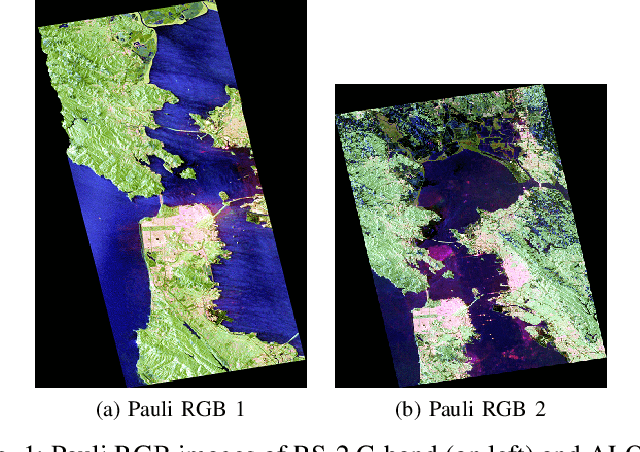


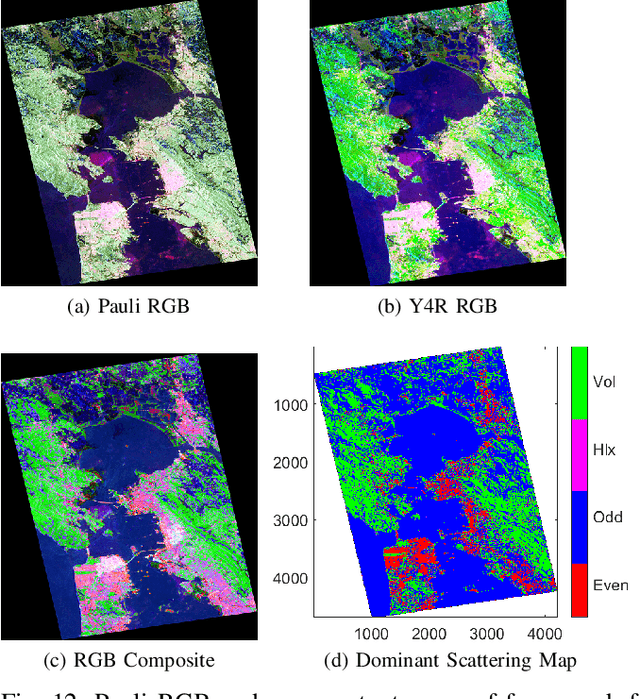
Abstract:We propose a generic Scattering Power Factorization Framework (SPFF) for Polarimetric Synthetic Aperture Radar (PolSAR) data to directly obtain $N$ scattering power components along with a residue power component for each pixel. Each scattering power component is factorized into similarity (or dissimilarity) using elementary targets and a generalized random volume model. The similarity measure is derived using a geodesic distance between pairs of $4\times4$ real Kennaugh matrices. In standard model-based decomposition schemes, the $3\times3$ Hermitian positive semi-definite covariance (or coherency) matrix is expressed as a weighted linear combination of scattering targets following a fixed hierarchical process. In contrast, under the proposed framework, a convex splitting of unity is performed to obtain the weights while preserving the dominance of the scattering components. The product of the total power (Span) with these weights provides the non-negative scattering power components. Furthermore, the framework along the geodesic distance is effectively used to obtain specific roll-invariant parameters which are then utilized to design an unsupervised classification scheme. The SPFF, the roll invariant parameters, and the classification results are assessed using C-band RADARSAT-2 and L-band ALOS-2 images of San Francisco.
Unsupervised Classification of PolSAR Data Using a Scattering Similarity Measure Derived from a Geodesic Distance
Dec 01, 2017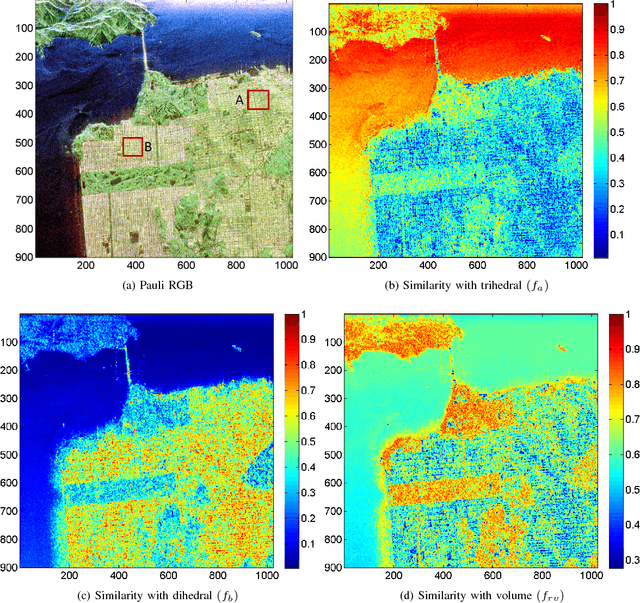
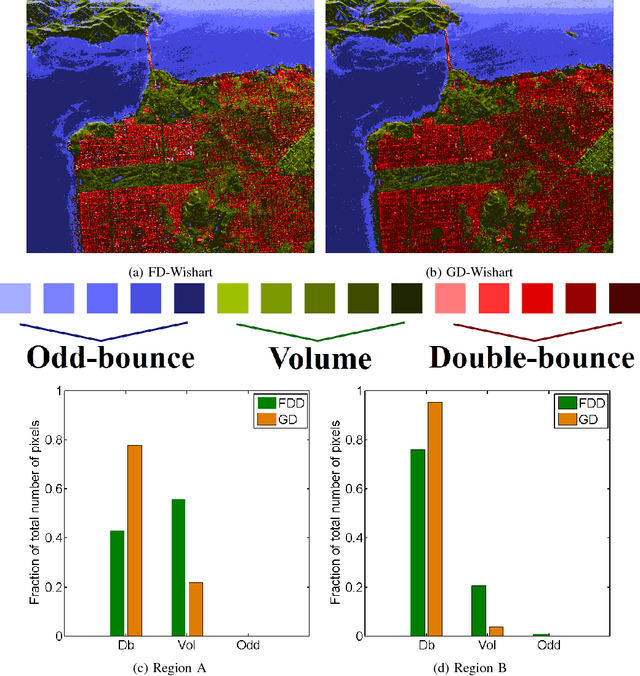

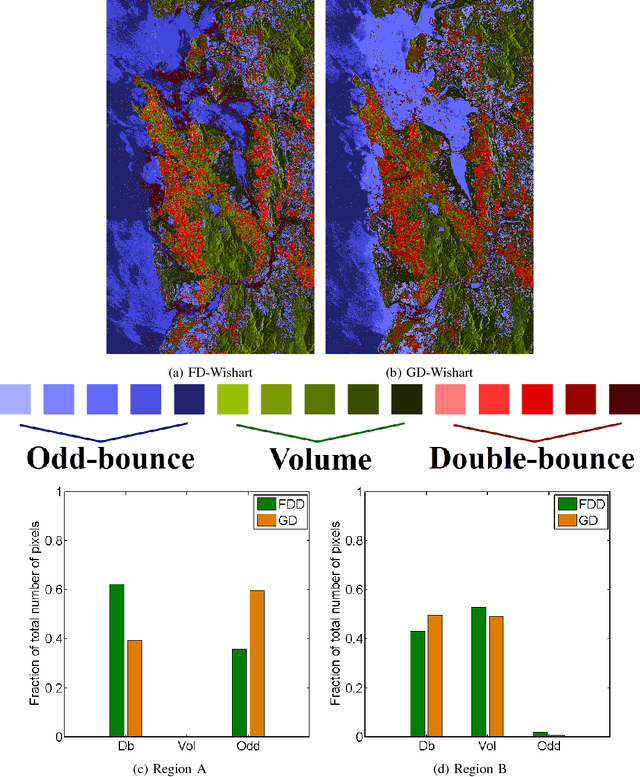
Abstract:In this letter, we propose a novel technique for obtaining scattering components from Polarimetric Synthetic Aperture Radar (PolSAR) data using the geodesic distance on the unit sphere. This geodesic distance is obtained between an elementary target and the observed Kennaugh matrix, and it is further utilized to compute a similarity measure between scattering mechanisms. The normalized similarity measure for each elementary target is then modulated with the total scattering power (Span). This measure is used to categorize pixels into three categories i.e. odd-bounce, double-bounce and volume, depending on which of the above scattering mechanisms dominate. Then the maximum likelihood classifier of [J.-S. Lee, M. R. Grunes, E. Pottier, and L. Ferro-Famil, Unsupervised terrain classification preserving polarimetric scattering characteristics, IEEE Trans. Geos. Rem. Sens., vol. 42, no. 4, pp. 722731, April 2004.] based on the complex Wishart distribution is iteratively used for each category. Dominant scattering mechanisms are thus preserved in this classification scheme. We show results for L-band AIRSAR and ALOS-2 datasets acquired over San Francisco and Mumbai, respectively. The scattering mechanisms are better preserved using the proposed methodology than the unsupervised classification results using the Freeman-Durden scattering powers on an orientation angle (OA) corrected PolSAR image. Furthermore, (1) the scattering similarity is a completely non-negative quantity unlike the negative powers that might occur in double- bounce and odd-bounce scattering component under Freeman Durden decomposition (FDD), and (2) the methodology can be extended to more canonical targets as well as for bistatic scattering.
 Add to Chrome
Add to Chrome Add to Firefox
Add to Firefox Add to Edge
Add to Edge